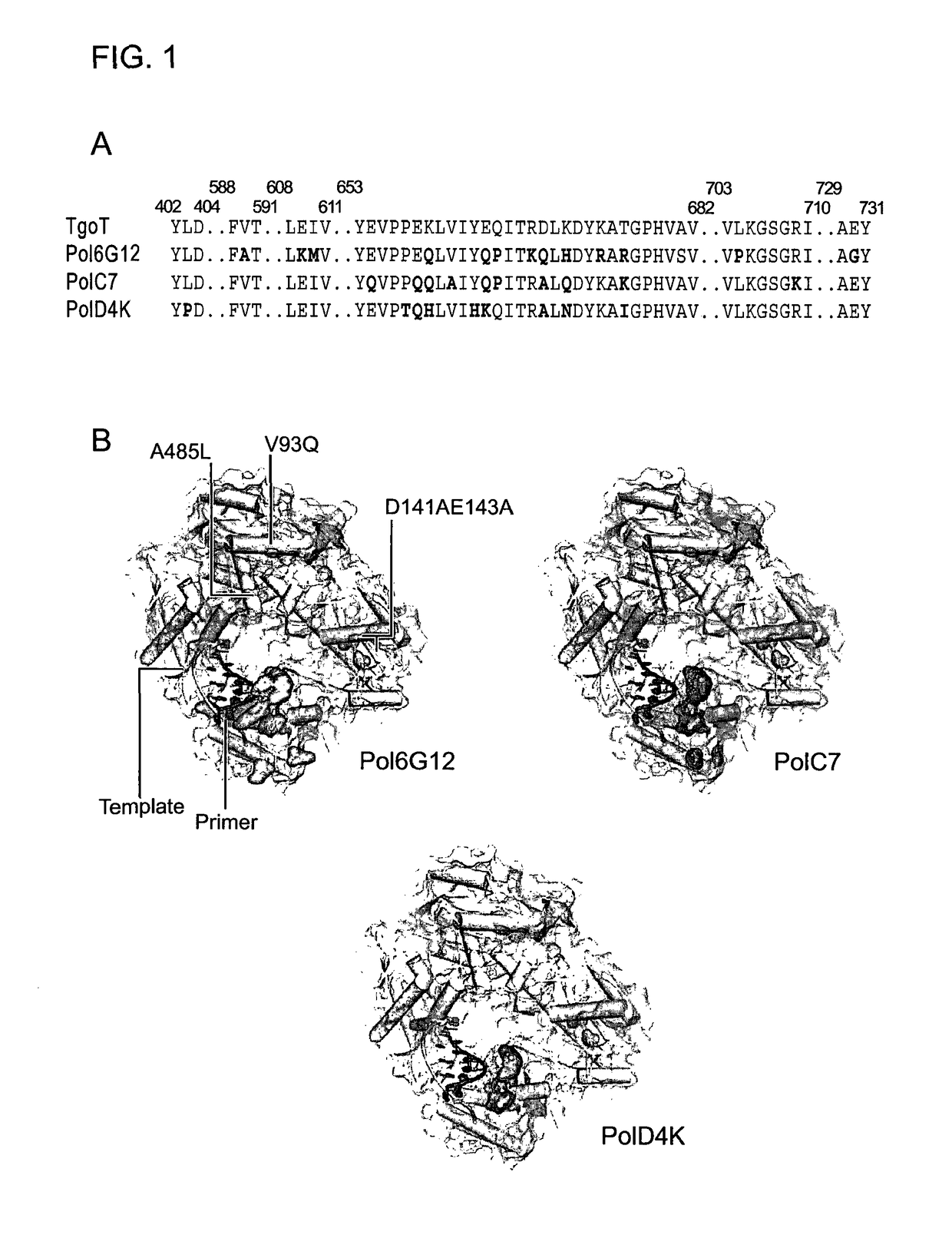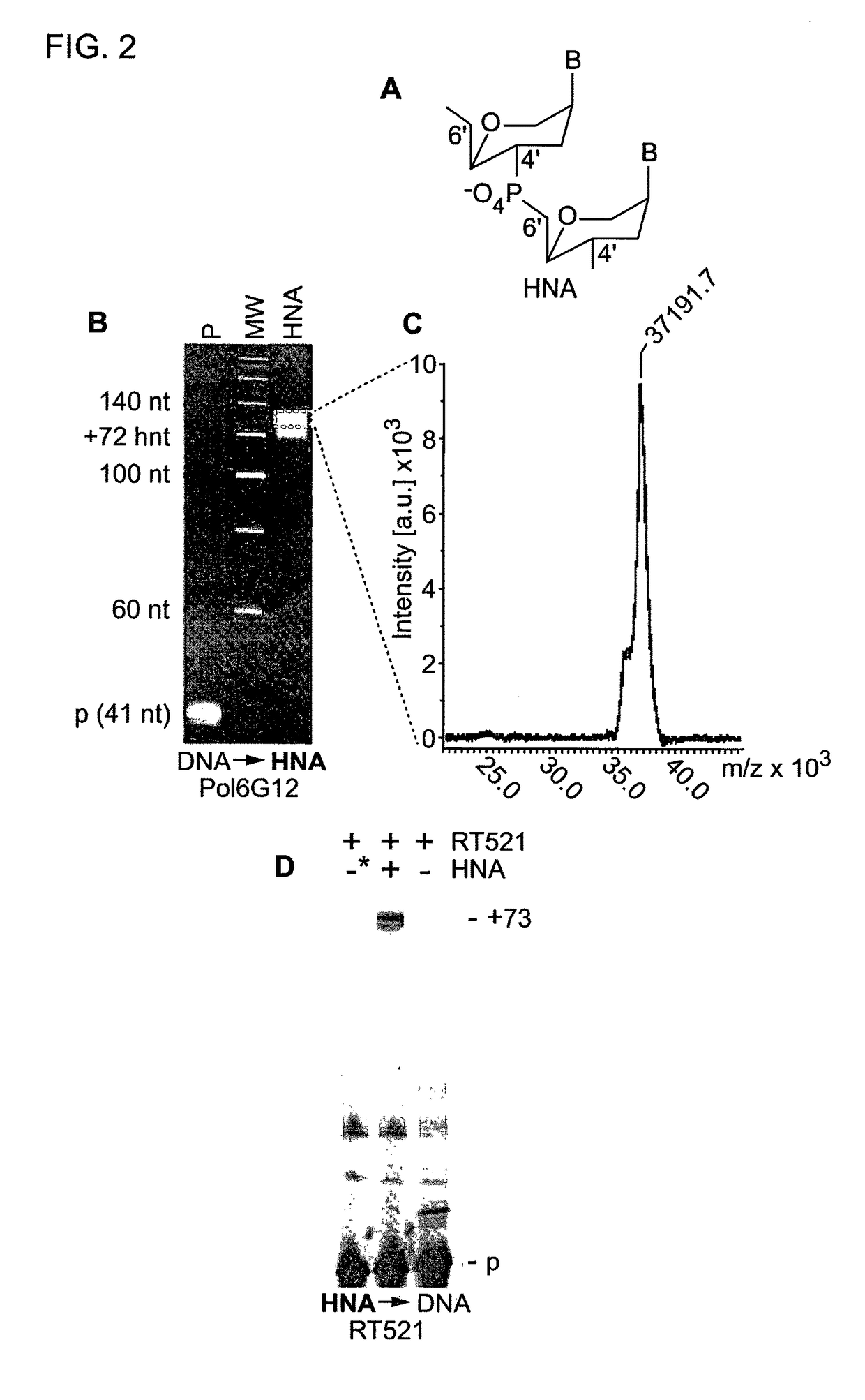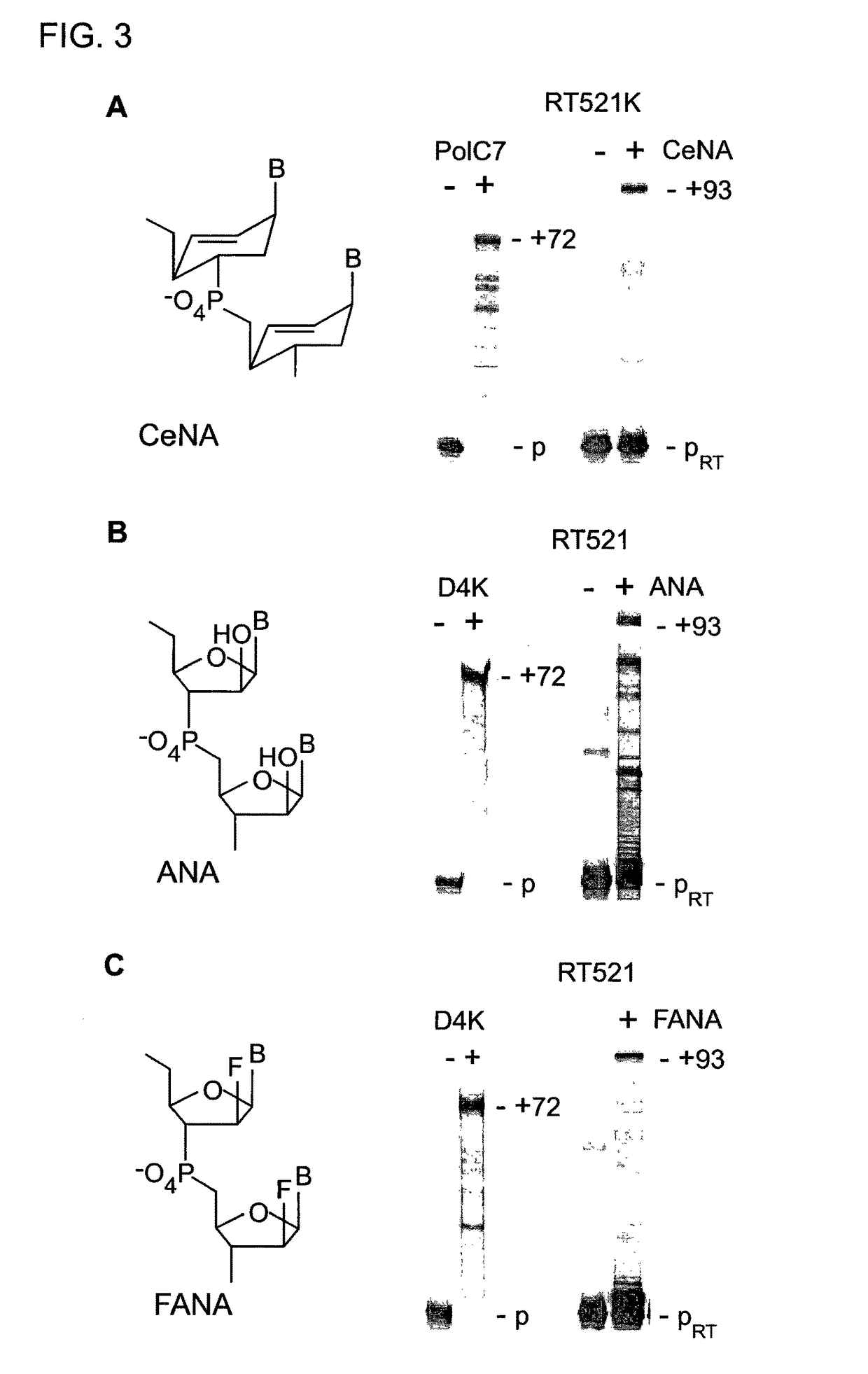Polymerase capable of producing non-DNA nucleotide polymers
a polymer and polymer technology, applied in the direction of enzymology, biochemistry apparatus and processes, transferases, etc., can solve the problems of high cost and technical demands of production of arabino nucleotide polymers of biologically useful length, and achieve the effect of convenient us
- Summary
- Abstract
- Description
- Claims
- Application Information
AI Technical Summary
Benefits of technology
Problems solved by technology
Method used
Image
Examples
example 1
ntalised Self-Tagging (CST)
[0278]To enable discovery of polymerases capable of processive XNA synthesis, we developed a selection strategy called compartmentalized self-tagging (CST) (FIG. S1). CST selections were performed on libraries of TgoT, a variant of the replicative polymerase of Thermococcus gorgonarius comprising mutations to the uracil-stalling (V93Q) (19) and 3-5′ exonuclease (D141A, E143A) functions, as well as a “Therminator” mutation (A485L) (20). TgoT libraries were created from both random and phylogenetic diversity targeted to 22 short sequence motifs within a 10 Å-shell of the nascent strand (FIG. S2).
example 2
erase
[0279]Next, we explored if other polymerases derived by CST and SCA might enable synthesis and reverse transcription of other synthetic genetic polymers. Screening identified PolD4K (L403P, P657T, E658Q, K659H, Y663H, E664K, D669A, K671N, T676I) (FIG. 1) as an efficient synthetase for ANA (D4K) and FANA (D4K) (FIG. 3A-C, E, F).
[0280]“Therminator” (9° N exo−: A485L) polymerase has previously been shown to support TNA synthesis (16), but TNA RTs were lacking. RT521 proved capable of both efficient TNA synthesis and reverse transcription (FIG. 3D).
[0281]In addition, RT521 is an efficient RT for both ANA and FANA (FIGS. 3B and 3C). An additional mutation (RT521: E664K) also present in D4K, was found to enhance CeNA-RT activity and enable reverse transcription of LNA (FIGS. 3A, 3E, S8). Together, these engineered polymerases support the synthesis and reverse transcription of six synthetic genetic polymers, and thus enable replication of the information encoded therein (FIG. 3G).
example 3
ated XNA Replication
[0282]Mutations enabling DNA-templated XNA synthesis were found to cluster at the periphery of the primer-template interaction interface in the polymerase thumb subdomain, >20 Å from the active site (FIG. 1B) and in one case allowed direct XNA-templated XNA replication (FANA, FIG. S9). In contrast, broad XNA RT activity was effected by just a single point mutation (I521L) in proximity to the catalytic aspartate (D542) and the polymerase active site. Its identification by SCA points to potential allosteric interaction networks involved in template recognition.
PUM
| Property | Measurement | Unit |
|---|---|---|
| Tm | aaaaa | aaaaa |
| molecular mass | aaaaa | aaaaa |
| mass | aaaaa | aaaaa |
Abstract
Description
Claims
Application Information
 Login to View More
Login to View More - R&D
- Intellectual Property
- Life Sciences
- Materials
- Tech Scout
- Unparalleled Data Quality
- Higher Quality Content
- 60% Fewer Hallucinations
Browse by: Latest US Patents, China's latest patents, Technical Efficacy Thesaurus, Application Domain, Technology Topic, Popular Technical Reports.
© 2025 PatSnap. All rights reserved.Legal|Privacy policy|Modern Slavery Act Transparency Statement|Sitemap|About US| Contact US: help@patsnap.com



